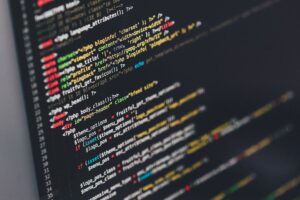Introduction
Android apps have become an integral part of our daily lives, powering everything from communication and entertainment to productivity and health. These apps are made up of several key components that work together seamlessly to provide users with rich and interactive experiences. In this article, we will delve into the essential components of an Android app, explaining their roles, interactions, and how they contribute to the overall functionality and user experience.

-
Android App Components Overview
1.1. Activities
Activities are the fundamental building blocks of Android apps, representing individual screens or user interface elements. Each activity typically corresponds to a single screen or interaction within the app.

1.2. Services
Services are background processes that can run independently of the user interface. They are used for tasks such as playing music, fetching data from the internet, or performing long-running operations.
1.3. Broadcast Receivers
Broadcast receivers are components that listen for system or application-wide events (broadcasts) and respond to them. They can trigger actions or launch other app components based on the received broadcasts.

1.4. Content Providers
Content providers manage access to structured data within an app or between apps. They enable data sharing and allow other apps to interact with an app’s data, typically using the Content Resolver API.
-
Activities: The User Interface
2.1. Role of Activities
Activities are responsible for presenting the user interface (UI) to the user. Each activity defines a layout and user interactions, making it a crucial component for creating the app’s visual and interactive experience.

2.2. Activity Lifecycle
Activities have a lifecycle that includes states like onCreate, onStart, onResume, onPause, onStop, and onDestroy. Understanding and managing this lifecycle is essential for proper UI management and resource cleanup.
2.3. Intents and Activity Navigation
Intents are used to start activities, allowing one activity to request the launch of another. Explicit intents specify the target activity, while implicit intents can trigger activities in other apps.
III. Services: Background Processing
3.1. Role of Services
Services are essential for performing background tasks that should continue running even when the app is not in the foreground. Common use cases include media playback, downloading files, and fetching data.
3.2. Service Types
There are two types of services in Android: started services and bound services. Started services are used for tasks with no direct user interaction, while bound services allow other components to bind to them and interact with them.
3.3. Service Lifecycle
Services have a lifecycle similar to activities, including methods like onCreate, onStartCommand, onBind, onUnbind, and onDestroy. Properly managing service lifecycles ensures efficient resource utilization.

-
Broadcast Receivers: Event Handling
4.1. Role of Broadcast Receivers
Broadcast receivers listen for broadcast messages and respond to specific system or application events. They are used to trigger actions or start other app components based on these events.
4.2. Broadcasts and Intent Filters
Broadcast receivers specify intent filters to define the types of broadcasts they listen for. Android broadcasts system events, such as battery status changes and screen on/off, which apps can intercept and respond to.
4.3. Ordered Broadcasts
Ordered broadcasts allow multiple receivers to process broadcasts sequentially. This feature can be useful for scenarios where the order of processing matters.

-
Content Providers: Data Management
5.1. Role of Content Providers
Content providers manage access to structured data stored in the app’s database or other data sources. They enable data sharing between apps and provide a consistent API for accessing data.
5.2. Content URIs
Content providers use content URIs to identify data resources and specify data queries. These URIs can represent tables, rows, or specific data items within the provider.
5.3. Content Resolver
To interact with content providers, apps use the Content Resolver API, which allows them to query, insert, update, and delete data. Content resolvers ensure secure and structured data access.
-
Interaction Between Components
6.1. Intents
Intents play a crucial role in facilitating communication between app components. They can be used to start activities, initiate services, and send broadcasts.
6.2. Pending Intents
Pending intents are a type of intent that can be scheduled for future execution. They are often used to perform actions at a specific time, such as sending a notification.

6.3. Explicit vs. Implicit Intents
Explicit intents explicitly specify the target component, while implicit intents declare a general action to perform, allowing the system to choose the appropriate component.
VII. Android App Architecture Patterns
7.1. Model-View-Controller (MVC)
The MVC pattern separates an app into three components: the Model (data and business logic), View (UI), and Controller (mediator between Model and View). While widely used, this pattern can lead to tight coupling.
7.2. Model-View-Presenter (MVP)
MVP separates concerns by introducing a Presenter that handles UI logic and communicates between the Model and View. This pattern promotes testability and flexibility.

7.3. Model-View-View Model (MVVM)
MVVM extends the MVP pattern by introducing a ViewModel that manages UI-related data and interactions. It is especially popular for data-binding and reactive programming in Android.
7.4. Clean Architecture
Clean Architecture divides an app into distinct layers, including Entity, Use Cases, and Presenters, to ensure separation of concerns, testability, and maintainability.
VIII. Common Android Libraries and Frameworks
8.1. Android Jetpack
Android Jetpack is a set of libraries, tools, and architectural guidance provided by Google to accelerate Android app development. It includes components like LiveData, ViewModel, Navigation, and Room.
8.2. Retrofit
Retrofit is a widely used library for making HTTP requests and handling API communication. It simplifies network operations and data retrieval in Android apps.

8.3. Dagger 2
Dagger 2 is a dependency injection framework that helps manage dependencies and promotes clean code architecture. It enhances code maintainability and testability.
8.4. RxJava
RxJava is a reactive programming library that allows developers to work with asynchronous and event-driven code in a more intuitive and concise manner.
-
Testing Android Apps
9.1. Importance of Testing
Testing is crucial for ensuring the reliability and quality of Android apps. Various testing approaches, including unit tests, integration tests, and UI tests, help identify and prevent issues.
9.2. Unit Testing
Unit testing involves testing individual units or components of an app in isolation. Frameworks like JUnit and Mockito are commonly used for writing unit tests in Android.
9.3. Instrumentation Testing
Instrumentation tests are used to test app behavior on an actual device or emulator. Espresso is a popular framework for writing UI and instrumentation tests.
- Building and Distributing Android Apps

10.1. Building an APK
To distribute an Android app, developers compile and build it into an Android Package (APK) file. The APK contains the app’s code, resources, and manifest.
10.2. App Signing
App signing involves generating a signing key and using it to sign the app’s APK. This process ensures app integrity and security.
10.3. Distribution Platforms
Android apps can be distributed through various platforms, including the Google Play Store, third-party app stores, or directly via APK files. Each distribution method has its advantages and considerations.
-
Conclusion: The Anatomy of an Android App
In conclusion, Android apps are complex systems composed of multiple components, each with its specific role and responsibilities. Understanding these components and their interactions is crucial for Android app development. Whether you’re a novice developer or an experienced one, mastering the key components and architectural patterns of Android apps is essential for creating robust, efficient, and user-friendly mobile applications. The Android ecosystem continues to evolve, offering developers a vast array of tools, libraries, and resources to build innovative and engaging apps for a global audience.

